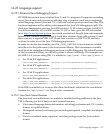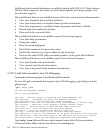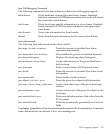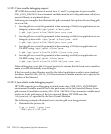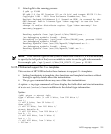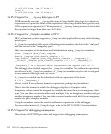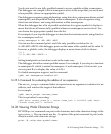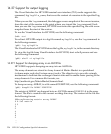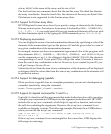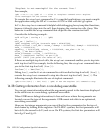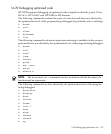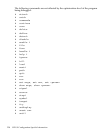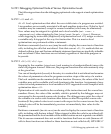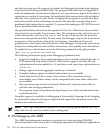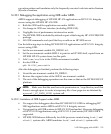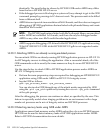where, ARRAY is the name of the array, and its size is 5x5.
The first two lines are comments about this file and the array. The third line denotes
the array coordinates. From the fourth line, the elements of the array are listed. Note:
This feature is not supported for the Fortran array slices.
14.27.2 Support for Fortran array slices
HP WDB prints Fortran array slices if you specify a range of elements by the Fortran
90 array section syntax. For instance, for an array X declared by REAL, DIMENSION(-
1:1, 2:10) :: X, you could print all five even-numbered elements of the row with
the first dimension equal to 0 by typing the WDB command print X(0,2:10:2).
14.27.3 Displaying enumerators
You can display the union of several enumeration elements by specifying a value if the
elements of the enumeration type are the powers of 2 and the given value is a sum of
any given combination of the enumeration elements.
For example, assume you have an enumerated type named color in the program, with
these elements: RED=0, ORANGE=1, YELLOW=2, GREEN=8, and BLUE=16. If you
use the command printf 3, the debugger displays ORANGE|YELLOW, the elements
corresponding to 1 and 2. If you print 5, you will get the value, 5, because it does not
form the sum of any combination in the set. However, if you wanted to print 25, you
will get Orange|Green|Blue.
Values that do not form the sum of any combination of the elements will be displayed
as integers while the values that form the sum of any combination of the elements will
be printed as unions.
14.27.4 Support for debugging typedefs
When you have a typedef class as a template parameter, you can set a breakpoint on
a member function by using the command:
break Class<typedef_classB>::memfunc
14.27.5 Support for steplast command for C and C++
Typically, if a function call has arguments that make further function calls, executing
a simple step command in GDB steps into the argument evaluation call. HP WDB
includes the steplast command, which helps to step into a function, and not into
the calls for evaluating the arguments. However, the steplast command is not
available on Integrity systems. The following example illustrates how GDB behaves
when you execute the steplast command:
(gdb) 16 foo (bar ()); ---> bar() will return 10 (gdb) steplast foo (x=10) at
foo.c:4 4 int k = 10;
If the steplast command is not meaningful for the current line, GDB displays the
following error message:
14.27 Support for output logging 225



